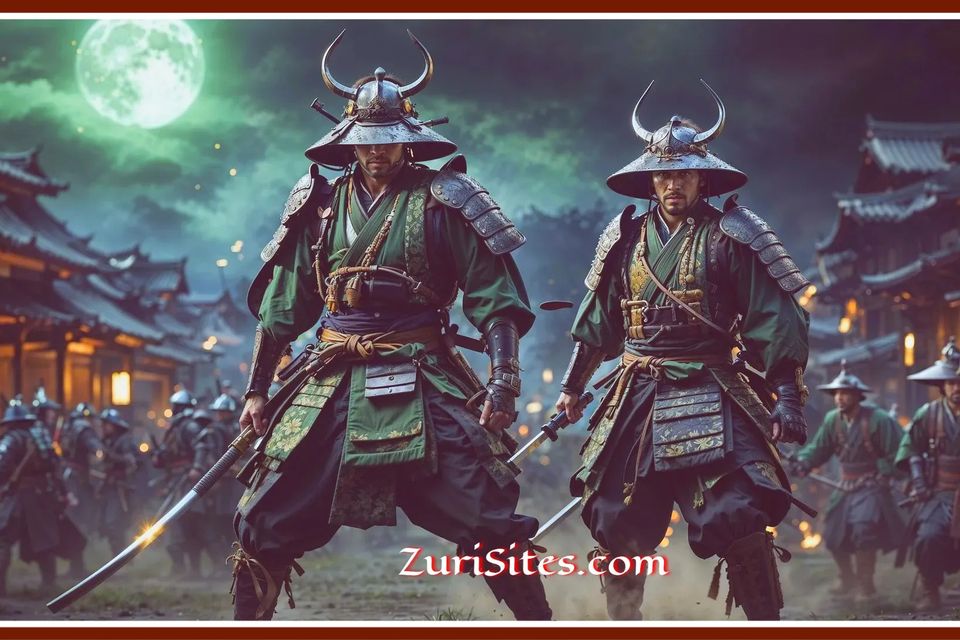
Samurai (侍) or bushi (武士, [bɯ.ɕi]) were members of the warrior class in Japan. They were originally provincial warriors who served the Kuge and imperial court in the late 12th century. Samurai eventually came to play a major political role until their abolition in the late 1870s during the Meiji era.[1][2]
In the Heian period, powerful regional clans were relied on to put down rebellions. After power struggles, the Taira clan defeated the Minamoto clan in 1160.[3] After the Minamoto defeated the Taira in 1185, Minamoto no Yoritomo established the Kamakura shogunate, a parallel government that did not supplant the imperial court.[4][5] The warriors who served the Shogunate were called gokenin, landholding warriors whose retainers were called samurai.[6][7] Gokenin were regulated by the Samurai-dokoro.
During the Sengoku Period, the term was vague and some samurai owned land, others were retainers or mercenaries.[8] There was a great increase in the number of men who styled themselves samurai by virtue of bearing arms, and performance mattered more than heritage.[9][10] During the Edo period, 1603 to 1868, they were mainly the stewards and chamberlains of the daimyo estates, roles they had also filled in the past. During the Edo period, they came to represent a hereditary class.[11] On the other hand, from the mid-Edo period, chōnin (townsman) and farmers could be promoted to the samurai class by being adopted into gokenin families or by serving in daikan offices, and low-ranking samurai could be transferred to lower social classes, such as chōnin, by changing jobs.[12][13]
In 1853, Japan was opened to the West by U.S. Commodore Matthew C. Perry, beginning the Bakumatsu ("end of the bakufu") era. Samurai from the rebellious Chōshū and Satsuma Domains played a major role in the sonnō jōi movement against the Tokugawa shogunate, and later in the Meiji Restoration and Boshin War of 1868, which restored power to the emperor. As modern militaries emerged in the late 19th century, the samurai were considered obsolete and expensive to maintain compared to the average conscript soldier. Their class was abolished in the 1870s by the policies of the new Meiji government. Most former samurai became members of the shizoku class, ranking above the commoner class and allowing them to move into professional and entrepreneurial roles; the shizoku class was later abolished in 1947.
In the Heian period, powerful regional clans were relied on to put down rebellions. After power struggles, the Taira clan defeated the Minamoto clan in 1160.[3] After the Minamoto defeated the Taira in 1185, Minamoto no Yoritomo established the Kamakura shogunate, a parallel government that did not supplant the imperial court.[4][5] The warriors who served the Shogunate were called gokenin, landholding warriors whose retainers were called samurai.[6][7] Gokenin were regulated by the Samurai-dokoro.
During the Sengoku Period, the term was vague and some samurai owned land, others were retainers or mercenaries.[8] There was a great increase in the number of men who styled themselves samurai by virtue of bearing arms, and performance mattered more than heritage.[9][10] During the Edo period, 1603 to 1868, they were mainly the stewards and chamberlains of the daimyo estates, roles they had also filled in the past. During the Edo period, they came to represent a hereditary class.[11] On the other hand, from the mid-Edo period, chōnin (townsman) and farmers could be promoted to the samurai class by being adopted into gokenin families or by serving in daikan offices, and low-ranking samurai could be transferred to lower social classes, such as chōnin, by changing jobs.[12][13]
In 1853, Japan was opened to the West by U.S. Commodore Matthew C. Perry, beginning the Bakumatsu ("end of the bakufu") era. Samurai from the rebellious Chōshū and Satsuma Domains played a major role in the sonnō jōi movement against the Tokugawa shogunate, and later in the Meiji Restoration and Boshin War of 1868, which restored power to the emperor. As modern militaries emerged in the late 19th century, the samurai were considered obsolete and expensive to maintain compared to the average conscript soldier. Their class was abolished in the 1870s by the policies of the new Meiji government. Most former samurai became members of the shizoku class, ranking above the commoner class and allowing them to move into professional and entrepreneurial roles; the shizoku class was later abolished in 1947.


